Although a whole ton of folks bought themselves a Kinect since the fancy peripheral was released over six months ago, that’s one bus I haven’t jumped on yet. My DJ Hero turntable, PlayStation Move controller, and Street Fighter arcade stick will be glad to tell you my tales of buying peripherals that I use a few times and then relegate to collecting dust (I suppose I could include my Wii on that list as well). However the Kinect is so uninteresting to me that I haven’t even found it worthy of dust accumulation.
While Child of Eden looks gorgeous and is something I’m absolutely picking up, being the spiritual successor to Rez, there’s no way I can play it without a controller. Thankfully behind all the personal trainer and dancing titles on the horizon there’s one game that you may not have even heard of that could finally get me to go out and buy one of these fancy cameras: Project Draco, a spiritual successor to a Sega series that has sadly drifted away from the spotlight called Panzer Dragoon.
Let’s get in the “wayback machine” for this one. In 1995 Sega released the Saturn, surprising the industry by releasing the system the day that it was unveiled at E3. This caused a number of problems. Initially the system was going to be released in September, a date which was called a ruse during its unveiling. Everyone loves when hardware and software get pushed up, but all the third-party developers weren’t told about the surprise, so no games were ready for launch except for ones from Sega themselves. In fact no games were going to be ready until September, four months after its new May release date. Also the retailers not involved in the early release felt left out and chose to back Sony’s upcoming PlayStation and the Nintendo 64 instead. However the first slam came just moments later at E3 when Sony announced their machine would be $299, a significant $100 less than the Saturn.
Launch titles are usually not that great, nor are there many of them, as was the case with the Saturn which had three. Virtua Fighter and Daytona USA were expected to sell the system, using the whole “arcade experience at home” philosophy. However the third title, one that came out probably due to its lack of needing much translation, was Panzer Dragoon.
Although the Saturn was originally intended to be a 2D powerhouse, once the PlayStation was announced, a second processor was added to the hardware, something that would eventually become a bane for developers. Wanting to show off its 3D potential, Sega gave the assignment to its first Saturn dev team, “Team Andromeda,” to create a shooting game, in 3D of course.
This led to Panzer Dragoon, an on-rails shooter where you take control of a flying dragon in a post-apocalyptic world. While the graphics don’t hold up as well today, at the time it was visually appealing, enhancing an already wonderful gameplay system. It certainly holds up better than a lot of other 3D titles from that era which were trying to do way too much with so little.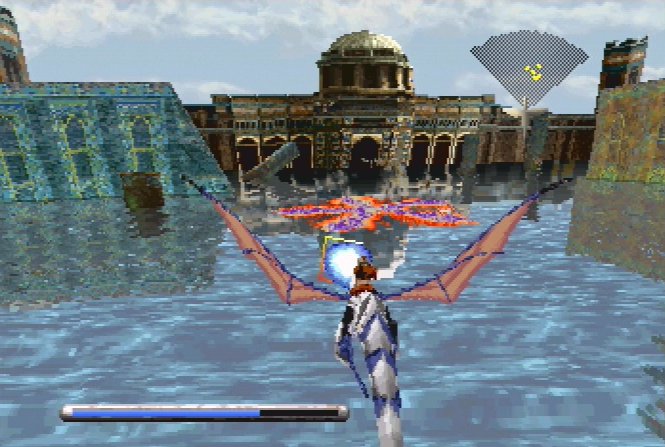
Beyond the graphics and the gameplay, there was a decent story that encouraged you to move forward through the campaign. Another highlight was the music, a nice blend of ethereal tones with high paced, almost rock-like rhythms. It was a good complement to the beauty and action combination the game already provided. Remember, this was a time when CD-quality audio in games was something new, so as impressive as the soundtrack is today, it was almost a mind-blowing 16 years ago.
Just one year later, Andromeda had finished work on a sequel, Panzer Dragoon Zwei, a much more fully featured title compared to the original, something that had to be expected as the first game was somewhat of a glorified tech demo. Zwei is the first game when looking at the overall Panzer Dragoon story timeline.
One of the most interesting features of the game is how you start off with a very young dragon unable to fly, so the initial combat, while still a rail shooter, is on the ground. Eventually your dragon can fly, and in fact it continuously develops throughout the game. How it develops is up to you, as are the paths you can take. Taking one route may increase its offense, however another route may improve the defense of your dragon. Its physical appearance would actually change as well. The addition of choice gave Zwei much more replay value than the original title.
Again the music was solid, but much more generic than the original, making it overall a less memorable soundtrack.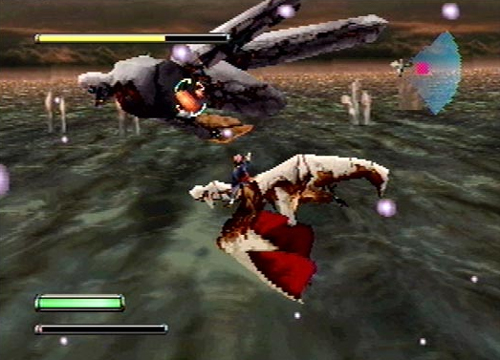
This on-rails road trip actually has one very unique side street in the form of Panzer Dragoon Saga. The third game in the series, and chronologically, it’s actually an RPG. There’s still flying, as that’s how you get around the world, but the battles are turn-based random encounters. While attacking is, again, turn-based, you can actually maneuver in real-time, which provides a nice variety to the static systems of other RPGs.
Your dragon is employed only in the “dungeon” areas, where otherwise you’re on foot. There is no combat in this mode. Being an RPG, of course the game is incredibly heavy in story, the most in all the Panzer Dragoon games, in fact probably more than all of them combined.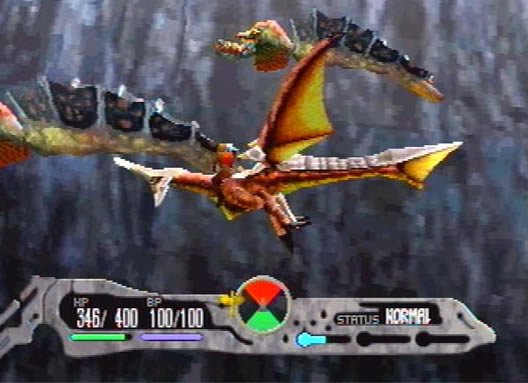
The story of this entry is quite the tale of woe. One of the most highly sought after games in Japan, it sat in the top five most-anticipated titles list in Sega Saturn Weekly from the time it was announced until its release. However it ended up not selling well, mainly due to the lack of interest in the Saturn during the end of its short lifecycle, which came quite abruptly. Reviews were incredibly positive; however they weren’t enough to sell copies. Even during development, Andromeda had to cope with the death of some of their team members: one due to a motorcycle accident, the other to suicide.
Sega barely released any copies of Saga into North America. The final tally was only 30,000 printed. A quick look at eBay shows copies of the title going for up to $300. Disc one alone had a recent sale for $45. Even more outstanding, an instruction manual went for $46.
On top of that, the game’s code is lost forever, making a re-release for a service like Xbox Live Arcade next to impossible. Truly a sad ending for what is regarded as one of the best RPGs of its era, if not all time.
The final entry in the Panzer Dragoon series was Orta, which came out for the Xbox almost a decade ago. The title was developed by Smilebit, which included many members from Team Andromeda. Orta went back to the on-rails shooter roots of the original two titles, but with the power of the Xbox behind it, providing colorful visuals that are still gorgeous even today. It mostly resembles Zwei with its multiple paths and upgrades.
Orta has one of the best game soundtracks of all time, with heavy, almost tribal-like drums, accompanied by an epic score, once more mirroring the gameplay by bringing together fantasy and action.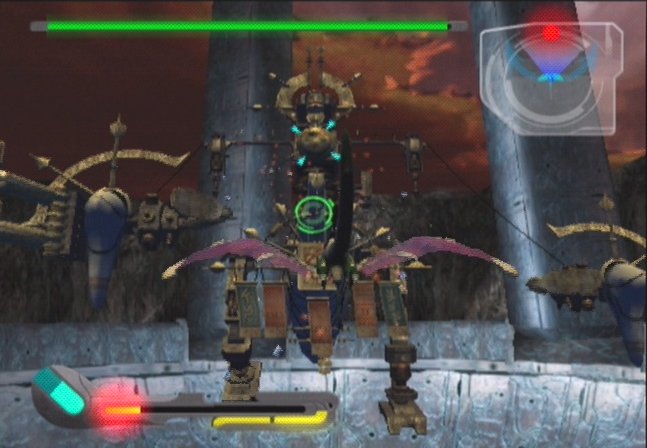
Again, the game sadly did not perform well. In Japan the Xbox was extremely unpopular, despite attempts by Japanese publishers to help bring more familiar titles to the system. There was even a special edition Panzer Dragoon-themed Xbox released in Japan. Outside of the country, the console still had the stigma of being for fans of shooters and western developed games, despite Sega’s attempt to deliver titles like Jet Set Radio Future and Shenmue 2.
The good news is Orta is readily available, usually for a reasonable price, and is playable on the Xbox 360 thanks to its often forgotten about backwards compatibility with certain original Xbox titles. Even better news, Orta comes with an unlockable version of the PC port of the original Panzer Dragoon.
This brings us to today where Panzer Dragoon seemed to be long forgotten until a surprise announcement of a Kinect title called Project Draco during the 2010 Tokyo Game Show by series creator Yukio Futatsugi. While not a whole lot is known about the title at this time, it is a shooter where you’re riding on a flying dragon, and, almost needless to say, has been officially labeled as inspired by the Panzer Dragoon series. Based on quotes from Futatsugi, it sounds like the game may actually be free roaming, or at least off-rails, rather than on-rails. Either way it’s enough to get me interested in Kinect.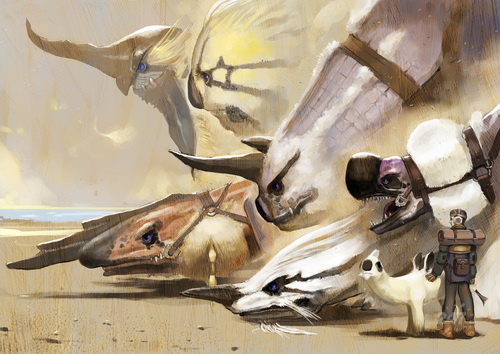
Aside from some offshoot projects like Panzer Dragoon Mini for the Game Gear (seriously) and an Anime, that’s the end of the Panzer Dragoon story, at least for now. I highly recommend you check out as much of the series as possible. Obviously titles like Saga are extremely difficult to come by unless you have a large amount of disposable income, but Orta is easy to find and is playable on the Xbox 360.